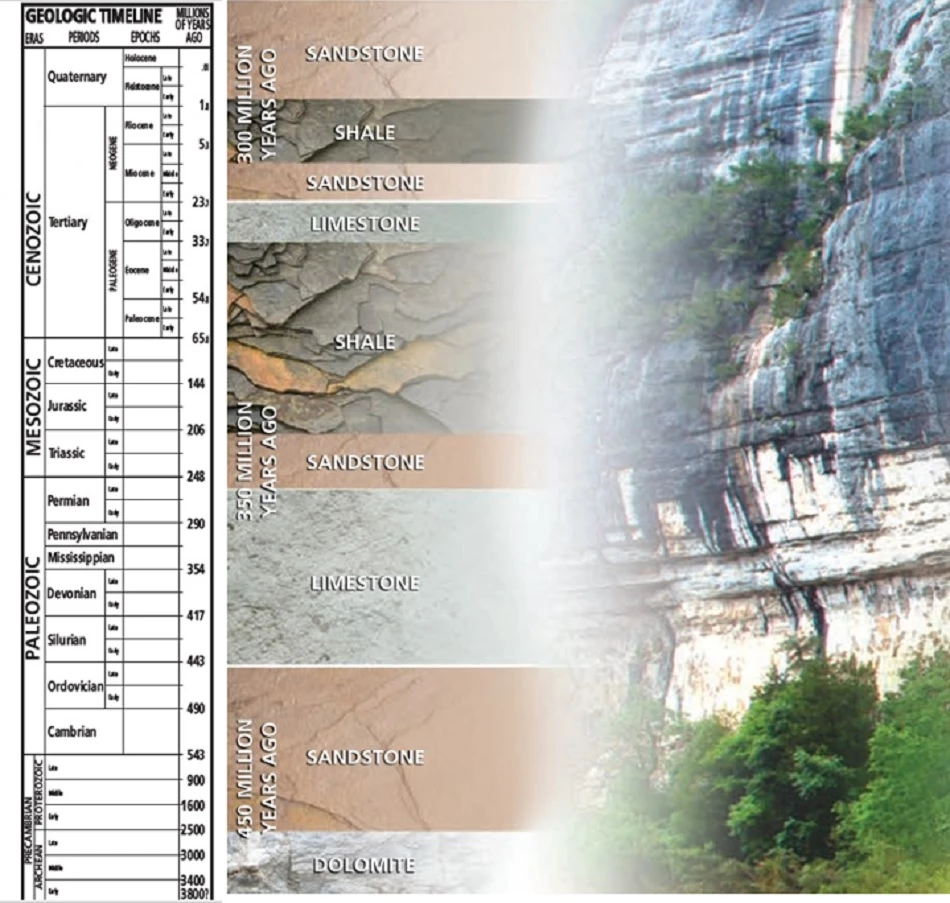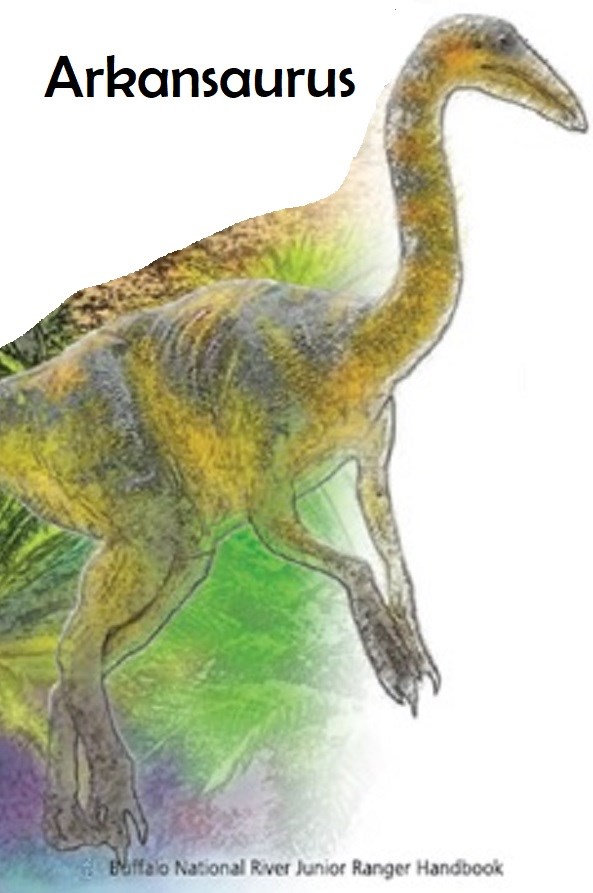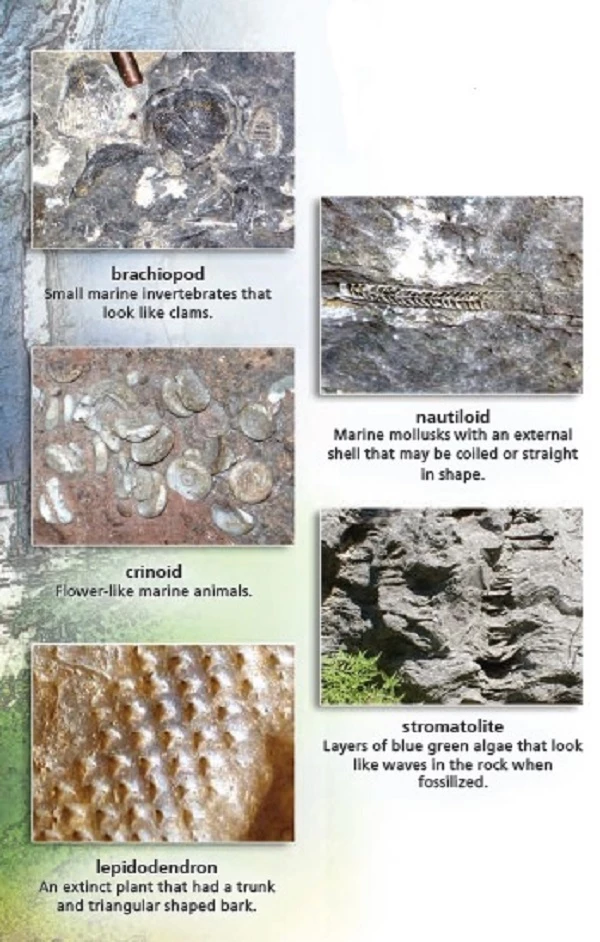|
Bluffs along the Buffalo River are layers of sedimentary rocks. For millions of years, sediments like sand or mud were washed into the bottom of a shallow sea. Each layer was pressed into rock as more layers washed on top of it. Sand became sandstone; mud became shale. The shells and skeletons as sea creatures died and fell to the ocean floor formed layers that became limestone. The Buffalo River area lifted up out of the sea the last time about 300 million years ago.
Draw a line from the layers of rocks at right to the right geologic period on the timeline at left. 
Buffalo National River Junior Ranger Handbook 
Buffalo National River Junior Ranger Handbook Based on your timeline above, do we have dinosaur fossils at Buffalo National River?
Pieces of plants or animals may be preserved or leave an impression in the sediment as it is pressed into rock. These fossils can tell us about what lived here in the past. Some fossilized animals are extinct and no similar species exist today. Other fossils show us the ancient ancestors of modern animals.

Buffalo National River Junior Ranger Handbook |
Last updated: May 11, 2020
